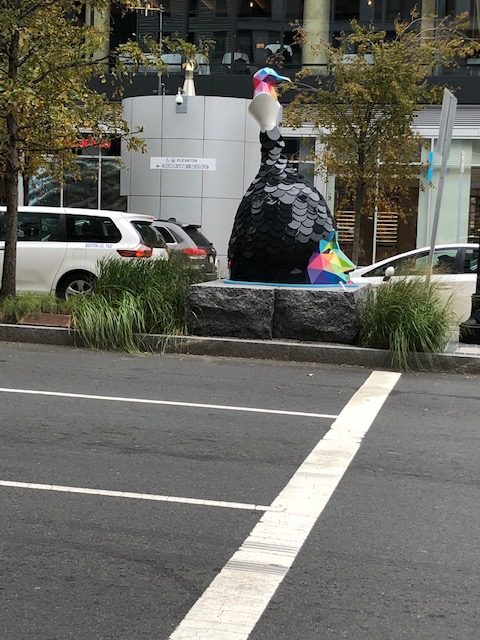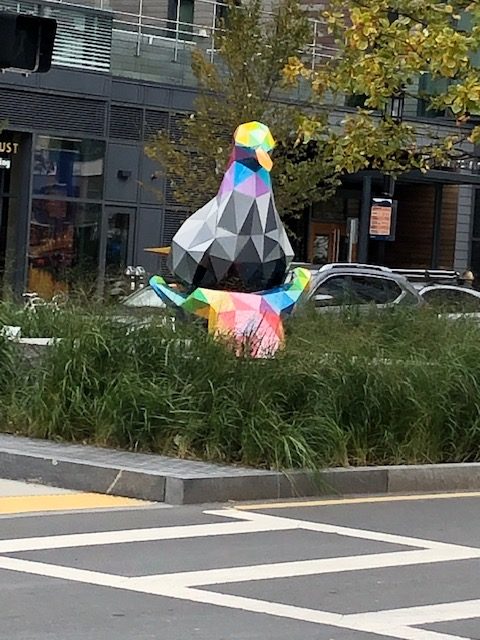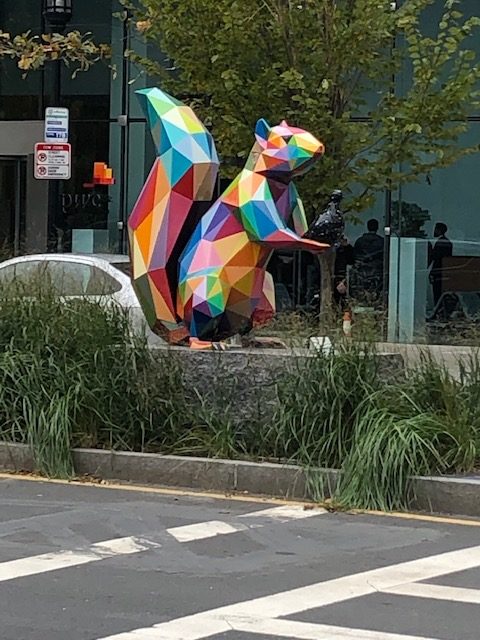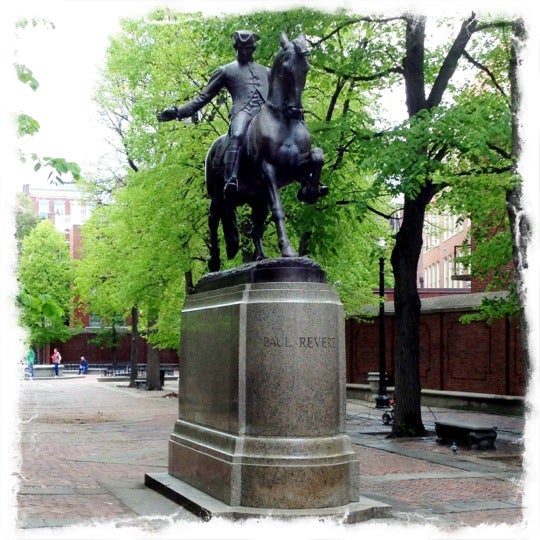close encounters, bitte
Boston, as I have noted in another blog, is a magical city to me. And not merely because I have run its famed marathon several times – 3, to be exact, a number significant to this blog – but more because it exudes history, charm, and a magnetism that defies description until you have walked its streets, eaten its [sea] food, driven in its traffic, ambled through venues and locales such as Boston Common, Faneuil Hall, and Quincy Market. Boston is replete with sport stories, teams, individual athletes, and special theatres, the latter termed ‘complex landscape ensembles‘ by Karl Raitz. Fenway Park with its green monster wall springs to mind as does the whole Boston marathon running route, the head of the Charles rowing regatta course, or, Boston Gardens, the latter effusing legends like Eddie Shore and Bobby Orr. And culture and the arts permeate the city – its Philharmonic, its Museum of Fine Arts & the Boston Tea Party Museum, Harvard, and the Massachusetts Institute of Technology (MIT). Like Florence and Paris, something there is that beckons one back to Boston.
And so, I returned to Boston last week for 3 days and 3 chance encounters, each of which will remain etched in my memories for a very long time. My wife, Jen and I came to Boston primarily to attend an Institute of Coaching conference held at the Renaissance Boston Waterfront hotel. Jen had two doctoral students presenting their coaching research; I came with no intention of attending the event save for brief appearances at the two presentations. Instead, I planned to roam Boston with harbourfront runs each morning and relaxed sojourns during each day. As I write this, I am reminded of a conundrum I was accustomed to tell in my university courses in efforts to stimulate creative and critical thinking. The conundrum is this:
A person leaves home, makes 3 left turns only to arrive back home to be greeted by a person wearing a mask.
What happened?
The answer – befitting the mention of Fenway Park – a home run in baseball. While they were not ‘turns,’ I experienced the exquisiteness of 3 separate events with 3 different people each of which was an unexpected and delightful encounter, perhaps they were ‘close encounters of the 3rd kind,’ except that there were no UFOs, I was the alien Canadian, and each person was unidentified until we had our rendezvous.

The first concurrence was with an Uber driver I met en route to exchange a Black Dog t-shirt I had purchased for Jen at its Faneuil Hall Marketplace location. Somehow, he and I connected almost instantly over a casual mention of Boston Red Sox baseball legend, Ted Williams, he who was nicknamed the “splendid splinter” for his batting prowess during the 1940s and 1950s. My driver was reeling from a recent fare, a woman from San Diego who, at some point in their conversation, mentioned living near the Ted Williams Freeway in that California city. Williams was born in San Diego; however, the passenger told her driver that she had no idea who Ted Williams was. Now, my/our Uber driver was as native Bostonian as they come, nasal, short ‘a’s’ and dropped ‘r’s’ accent and all. He was just astounded that there existed a person on the planet who did not know Ted Williams. I colluded with his amazement and wanted to see just what my driver knew about Williams. I recounted the apocryphal story of Williams and Yankee slugger, Joe DiMaggio, arch-rivals and possessed of very different temperaments, meeting at some restaurant face-to-face. The story goes that Williams gave DiMaggio an autographed baseball; Joe, impeccably dressed in suit and tie, carefully manicured, and well-coiffed, thanked Ted politely and turned to walk away. Williams called out to him, some version of, ‘hey Joe, don’t you have a signed ball for me?’ DiMaggio, of no small ego and likely very jealous of Williams’ slugging prowess, responded with, ‘of course…for $300.’ Turns out, the Uber driver and I had read the same biographies, several on DiMaggio and one on Williams. We spent our short ride exchanging repartees from those narratives. It was an easy conversation; two people connecting on common ground, each enamoured by the baseball legends on whom we expounded except that no detail was needed: DiMaggio met Paul Simon at toots shor’s New York city restaurant, chastizing the vocalist for the lines, “where have you gone Joe DiMaggio” when, clearly, he [said DiMaggio to Simon] was still right here. About Williams’ .406 batting average year, nothing could be said just shared reverence and incredulity. I left the Uber driver too soon once we arrived at the Market. Rarely, odd as it may seem to those who know me, do I have conversations about sport; this is/was one I shan’t forget. Turns out, the word ‘uber,’ a German word meaning ‘over’ and the Uber driver connection reverberated prophetically in my next chance meeting.

The second encounter was so unexpected, so refreshing and just so warm. I am a fan of Tim Horton’s coffee. Boston, to the best of my knowledge, has no such coffee shop. Instead, Starbucks are ubiquitous, often a few blocks apart, rivalled only by Dunkin’ Donuts. The latter I cannot abide for coffee and the only thing about Starbucks that is alluring to me is its logo, the green and white siren or 2-tailed mermaid stylized after a 16th century, Nordic goddess woodcut:

While not in Rome, I was in Boston so I did what most Bostonians do – save the Dunkin’ loyalists – and succumbed to Starbucks – light roasted brew, heavily creamed and sugared to quell softly the strong taste. Early on my second Boston-afternoon I wandered the streets, thinking of Charlie in the Kingston Trio song, the M.T.A wherein Charlie, bereft of adequate fare, rides the subway forever ‘neath the streets of Boston.’ I surrendered and entered a two-story Starbucks downtown. I thought I would sit, relax, try a ‘morning bun’ (cinnamon bun in any other establishment) and savour, as best I could, a caffeinated beverage.
The baristas and serving area were on the ground floor. I made my purchase and headed upstairs to the lounge area, a very expansive and comfortable looking room with leather chairs, 2-seater couches, and a row of small circular tables, each surrounded by 2 or 3 chairs. The lounge had perhaps half a dozen people, most adults taking advantage of free wifi on their computers and phones. I selected a table, pulled out my iphone 7 – very Starbuckian – and sipped my coffee. Less than a minute after I sat down, I noticed a young boy, 10 or 11, come around from the stairwell and he sat himself two tables away from me. Günter, as I now call him – we never exchanged names, but it seemed only fitting he would have an umlaut-accent (the ü in his fictitious identifier) in his name – seated himself easily in the chair facing the same direction I was. He stretched his right leg languidly and casually out in front of him, his left knee bent and its leg perpendicular to the floor, his foot bouncing lightly to some cadence known only to him. He had a wave at the front of his brown, carefully combed hair and his jacket, zippered up, and his pants were both grey, feet shod in casual black sneakers with white soles. All of this I noticed almost immediately and peripherally. He held his phone in two hands and very soon after seating himself so nonchalantly, he turned toward me and asked, “Sprechen sie Deutsch?” [do you speak German?] Bemused and amused at the same time, I had the wherewithall to respond with, “Ich spreche nicht Deutsch” [I don’t speak German]. 3 – that number again – years of high school German finally came to some use beyond its grammar, parsing, and declension lessons, certainly anything but useful, conversational German instruction.
Günter and I spent the next 10 minutes in a light, interrogative-mostly discourse of broken English (his) and very broken German (mine). He seemed confused that I would say I don’t speak German in that language and so I explained my high school learning was confined to such useful phrases as “Don, erase the blackboard, please, (lösche die tafel bitte)” a request from my teacher, Mr Tuck whom we delighted in labelling as Friar Tuck. Or, we learned poems or songs like, “The sun is shining bright, the sky like that blue (Die Sonne scheint hell, Himmel so blau!).” My favourite was singing, yes, singing in a high school classroom, “O Tannenbaum (Oh Christmas Tree).” I told the young man I much preferred the German title to the English one for this carol and much like, the Latin, Venite Adoremus (Oh Come All ye Faithful ) both just sound better phonetically than the English versions. At the time I learned secondary school German, it was the rigour of learning; using the language conversationally never seemed important.
He was from Cologne and seemed amused to learn there was another London, in Canada rather than its namesake in England. I realized later in the afternoon that my young German friend likely used a translation app on his phone; he seemed to go to that medium each time he spoke to me and just before doing so. We talked about our phones (his a Samsung Galaxy S10, he stated proudly and was mine an iphone 7 or 8 and did I like it, he asked), cities he visited – Toronto, Montreal, Quebec City – now Boston, and in the next week, he was to go to New York City to visit his cousin. It didn’t seem to matter to either of us that he was alone in Starbucks until near the end of our conversation when a man’s voice called to him, auf Deutsch, from the lower level. Günter’s response to the beckoning included ‘nein‘ (no) several times until the man came up the stairs and was introduced as the boy’s vater/father. The father did not introduce himself to me but smiled congenially and very quickly discerned that his son had found a friend; Günter and I filled him in on the gist of our conversation. Soon, a young girl, 8 or 9 years and a woman in her late 30s appeared next to the father. Turns out, these were the New York city relatives who had come to meet them in Boston. Although warm, the 3 new-comers interrupted the feel of our private conversation bubble. Interestingly, the 3 people said good-bye to me and in return I said, auf wiedersehen – more elegant than good-bye, it translates to, ‘until we meet again.’ Günter didn’t move when the other 3 people left. Rather, he put his phone down on the table, turned in my direction, looked me directly in the eyes and said, slowly, carefully, and softly, auf wiedersehen and slid laterally from his seat to pivot and descend the stairs. I responded in kind, auf wiedersehen. Very likely, Günter and I will never meet again; however, I rejoice in that we did meet, truly met on a chance encounter in a Boston Starbucks – a 70-year-old retired professor and a self confident young man on the other side of living his life.

My third encounter was as serendipitous as the other two and it happened at the end of our last day in Boston. In the program for the coaching conference, I had noticed that the very last presentation of the 2-day event was to be a keynote address by Dr. Richard Kogan. I had no compelling interest in any other of the conference papers or talks, save the ones by Jen’s two grad students, but this one caught my eye. The title was, “Chopin and the Power of Resilience.” The juxtaposition of the famous composer with a coaching topic (resilience) seemed odd, so out of curiosity I read the program excerpt about his talk. Turns out, Dr Richard Kogan was an MD, a psychiatrist, and a concert pianist. My instant, internal affirmation was that this would be something worth attending. To say the least, I was not disappointed.
The room in the hotel wherein Dr Kogan was to speak was huge, a ballroom turned into a conference venue with hundreds of chairs, a dozen round tables encircled by chairs, and 4 huge, white projection screens spaced evenly across the expanse of the front of the room. These screens would be delivery media, projecting powerpoint or keynote forms of presentation from most speakers, but not Dr Kogan’s, it turned out. Jen and I chose chairs fronting one of the round tables near the back and in the centre of the presentation hall. Once seated, I was drawn to the grand piano situated beneath the stage. Perhaps Dr Kogan would play something from Chopin, I mused. The session began with a warm introduction to Dr Kogan by one of the conference facilitators. What happened next was almost 90 minutes of one of the most exquisite narrations interspersed with a variety of Chopin’s compositions. Dr Kogan was superbly captivating, his narrative polished and emphatic, his music piercingly poignant and moving. I left feeling like I had been part of something and someone very special.
Returning home, I had an irresistable urge to contact Dr Kogan to tell him what I felt was his impact on me, certainly on the room of people he gifted with his talk and his musicality. I googled him, found out more about him (he speaks/plays about many composers – a small sample of his Chopin presentation is linked here), retrieved an email address, and sent him this note:
Richard,
On Saturday, I had the pleasure of listening to you at the Coaching conference at the Renaissance Boston Waterfront hotel. I know nothing, absolutely nothing about music; have no ability to follow a beat when dancing, and for pleasurable music-listening, I’m a rock music kind of guy (Freddy Mercury remains my favourite performing artist – there’s a challenge for your ‘composers’ repertoire😊). At any rate, I wanted to share that I was mesmerized by your performance. My training and profession was/is in sport history and my skill was/is in narrative writing and teaching. You are a very skilled narrator (despite the microphone issues to which you seemed to adapt extremely well) and obviously, equally adept pianist. How you delivered your presentation was literally and figuratively ‘music’ to my ears. Your sense of pace, inflections, linguistic acumen, historical precision, and passion were just so well combined and conveyed elegantly. By the end, I felt I knew who Chopin was and what it was like to be him – you brought us inside his skin. My older sister enjoyed a career as a high school vocal music teacher and she and my younger sister played scales endlessly in learning piano and moving through their Conservatory grades. Would that I had known Chopin’s belief about scales and dividing practice times in half – I’d have offered both ideas to my sisters in a heartbeat. In returning to London, Ontario from the coaching conference, I related my feelings about your presentation to my older sister via email. Having an email from me with the Subject line entitled, ‘Chopin,’ she tells me, nearly shocked her. After recovering, she told me she spent years trying to perform Chopin’s minute waltz in a minute until she decided to go with the French meaning of the word ‘minute,’ apparently a point of some debate in the music world.
At any rate, I wanted to say thanks for what you do; it makes and you make a difference in people’s lives. And, in all my years of teaching, and teaching teachers/professors how to teach and observing others teach, I have never seen anyone put their folded, left-hand against the side of their abdomen as you do so comfortably in speaking – it – and you – fascinated me.
Thank you for being you,
don
It turns out that Richard was intrigued enough by my emailed acknowledgement that he called me at our home (my phone number was in my email signature file), left a voice-mail thanking me and gave me his phone number, “if I were interested in chatting.” I was gobsmacked and flattered. We played telephone tag for a day or so after his initial call and finally connected just as I was finishing this blog. Imagine, me having a conversation with a concert pianist about Chopin! Richard was, as I expected, both gracious and affable. We talked about baseball, sport biographies especially those related to baseball and many of which he too had read, his work with the “luminaries” of classical music, mine (and Jen’s) coaching and motivational interviewing interests/workshops, my other two encounters in Boston. He listened and he asked questions about me and even if I noticed anything on which he might improve in his presentation style. It was light, warm, dialogic, and mutually respectful, a connective completion to my Boston audience-experience of him. For now, I am just so grateful for the 3 encounters I experienced in that wonderful New England city. I will tumble home to Boston often in the years to come, to those 3 encounters especially. And to the universe that kept me open to these experiences, I humbly say, dankeschön, thank you most kindly.

